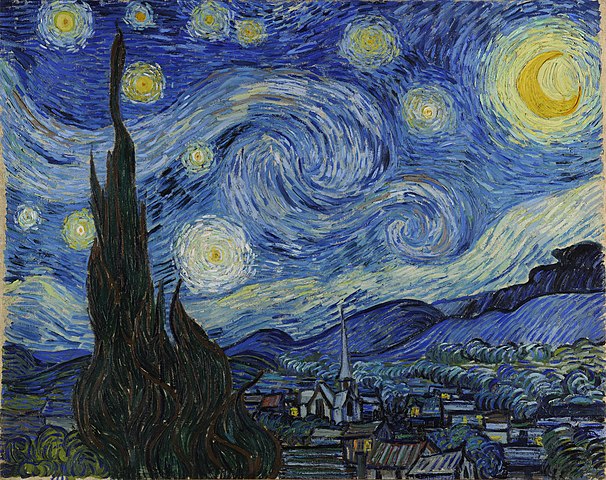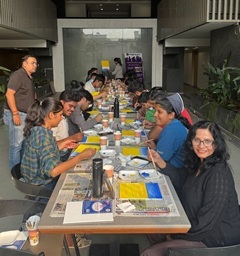I often think that the night is more alive and more richly colored than the day.
Vincent van Gogh


Vincent van Gogh’s “The Starry Night” is one of the most famous and beloved paintings in the world. Painted in 1889, this oil on canvas masterpiece is now housed at the Museum of Modern Art in New York City.
The painting depicts a small village surrounded by hills, with a large cypress tree dominating the foreground. The sky above is a swirling vortex of blue, yellow, and white, with stars shining bright against the dark backdrop.
The composition is dominated by the contrast between the brightly lit sky and the dark landscape, which gives the painting a dramatic and powerful effect. The cypress tree in the foreground serves as a powerful anchor, drawing the viewer’s eye into the painting and creating a sense of depth and movement.
Van Gogh was known for his use of color and his bold, expressive brushstrokes. In “The Starry Night,” he uses thick, swirling strokes to create a sense of movement and dynamism in the sky, while the trees and buildings are rendered in starker, more angular strokes. The painting comes out as a very intense play of colors and patterns.
There is a sense of energy and emotion in the painting that is palpable. The swirling sky and the bright stars seem to suggest a sense of awe and wonder at the beauty of the universe, while the dark landscape below serves as a reminder of the harsh realities of life on earth.
Van Gogh was a deeply troubled artist who struggled with mental illness throughout his life. “The Starry Night” was painted while he was a patient at the Saint-Paul-de-Mausole asylum in southern France, and it is believed that the painting reflects his own inner turmoil and sense of isolation.
Despite the darkness of his own inner world, however, van Gogh was still able to create works of great beauty and power. “The Starry Night” is a testament to his genius and his ability to find beauty in even the darkest moments of life.
Today, “The Starry Night” is recognized as one of the greatest paintings of all time. Its striking composition, vibrant colors, and powerful emotions continue to inspire and captivate viewers around the world. The painting is estimated to be worth more than $100 million.

Create, Connect, Collaborate!
